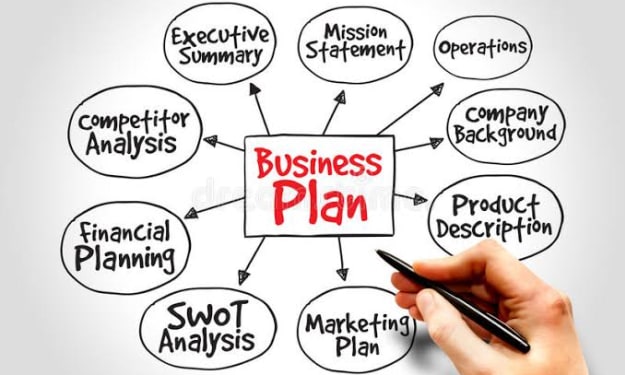Raising Capital Through a Public Stock Offering
Other Methods of Financing

A public stock offering is probably the most complicated of the four ways to raise equity capital. Using this method means generating scads of paperwork to satisfy SEC rules. With that in mind, here are capsule descriptions of the four types of public stock registration open to your company:
S-1 offerings. This is the general filing registration required by the SEC and is rarely suitable for smaller companies. It requires maximum disclosure for both the offering and later statements. This can be extremely demanding and costly.
➤ Recommendation: S-1 registrations should be used only by larger companies that have the financial resources and the staff to complete the forms involved. The reason is very simple: S-1 registrations can cost upwards of $300,000, putting them out of reach of most small companies.
S-2 offerings. In essence, this is an S-1 offering designed for companies with a limited history: that is, no substantial sales and earnings for the past five years. For such firms, the SEC requires publishing detailed information on the use of the proceeds and issuing voluminous reports on the credibility and integrity of the principals.
S-18 offerings. The S-18 offering is geared toward small businesses that need to raise substantial amounts of money (up to $5 million). The key is that S-18 offerings are processed by regional SEC offices, and there is no need to file with the SEC’s Washington headquarters. This cuts down the cost significantly. S-18s can be brought to market for $100,000 or less. Criteria for an S-18 offering include: (1) the offering must be for cash; (2) the company must be incorporated in the United States or Canada; and (3) the firm may not be an investment company or limited partnership.
Regulation A offerings. This type is designed specifically for small companies and is exempt from many of the filing requirements. To qualify, your company cannot have more than $1 million in assets or 500 shareholders. No more than $1.5 million can be raised. Sometimes Regulation A offerings can be brought to market for as little as $50,000.
➤ Observation: The filing of a registration statement for a new public common stock offering involves a great deal of red tape, with the costs borne by the company. Some of the individual costs involved are as follows: the time managers must devote to preparing a prospectus; your own lawyer’s and the underwriter’s lawyer’s fees; printing costs, including the prospectus and registration statement; registration costs for every state in which the stock is to be sold; accounting fees; SEC fees; registration and transfer fees; and federal issue and transfer taxes (if any).
Add to these items the selling commission, and the total cost becomes significant. A recent survey indicates that the cost of floating a common stock issue amounted, on average, to nearly 13 percent of the proceeds. Keep in mind that this is for an average offering. Without economies of scale, costs for smaller offerings run relatively higher.
Other Methods of Financing
In addition to the more traditional ways of raising capital through bank loans or stock and bond offerings, there are a number of lesser-known methods, many of which are simply variations of the traditional ones.
A Look at Leasing
By definition, you may wonder how leasing could be included in a discussion on sources of fi-nancing. After all, a lease is an agreement (contract) conveying to a business (the lessee) the right to use specified property, plant or equipment owned by another party (the lessor) for a stated period of time.
Although leasing may not technically be a source of capital, it does make additional capital available to a company by permitting the firm to finance 100 percent of the acquisition cost of an asset, whereas a typical equipment loan may require a 20 percent to 30 percent down payment. Similarly, delivery and installation charges, certain taxes, insurance, legal and clerical costs of arranging the lease, and maintenance expenses are among the other cost elements that may be incorporated into the rental installments and thus financed over the lease term.
Even though the Tax Reform Act of 1986 increased the after-tax cost of leasing, it is still one of the few potential sources of no-money-down, fixed-rate financing. It conserves cash and on-the-book borrowing capacity (because leases are not recorded as a liability on the balance sheet), and it transfers some of the risks of equipment obsolescence to the lessor. Companies with heavy debt burdens—often from leveraged buyouts—are turning increasingly to leasing as a way to finance new equipment.
Although the tax act may have increased the costs, there are two key factors that many com¬panies still aren’t considering in their buy-versus-lease decision making:
● The repeal of the investment tax credit and the lengthening of depreciation schedules for some equipment have increased the cost of buying more than they have the cost of leasing in many cases. Lease on a case-by-case basis.
● The act established the alternative minimum tax (AMT), which imposes a 20 percent tax on many common tax deductions designated as “tax preference items.” The idea was to make sure companies couldn’t have so many deductions that they would end up paying no taxes.
What is significant in the leasing arena is that accelerated depreciation—a big reason in the past for buying an asset—is among those tax preference items. However, if your company is sub¬ject to AMT and it leases, you can deduct the rent or lease payments as expenses for both regular tax and AMT purposes.






Comments
There are no comments for this story
Be the first to respond and start the conversation.